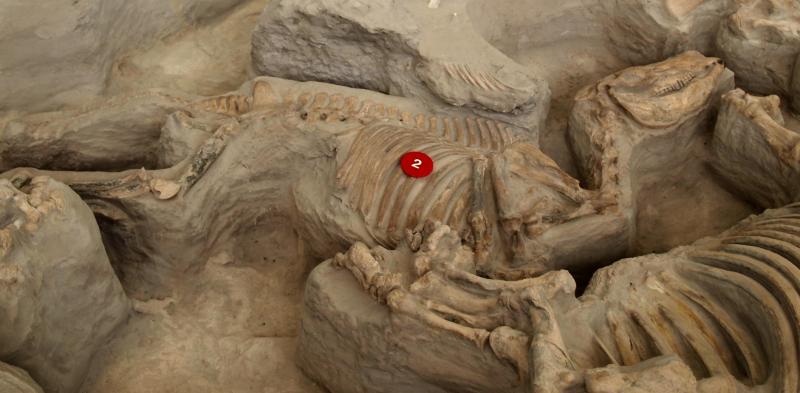
This past week on Fossil Friday, I presented you with a fossil from Fossil Fan Gerald Wilgus to keep you on your toes! Gerald was taking a motorcycle trip across Nebraska when he snapped the photo of an animal that had been entombed by volcanic ash way back in the Miocene.
What was it? Most people decided pretty early on that it was some sort of horse, but John Harshman correctly identified it first as a Cormohipparion and Robert Dekko shared some information about where the fossil came from.
From the University of Nebraska State Museum:
"About 12 million years ago, a volcano in southwest Idaho spread a blanket of ash over a very large area. One or two feet of this powdered glass covered the flat savannah-like grasslands of northeastern Nebraska.
Most of the animals which lived here survived the actual ashfall, but as they continued to graze on the ash covered grasses, their lungs began to fill up with the abrasive powder. Soon their lungs became severely damaged and they began to die.
The smaller animals died first (smaller lung capacities) and finally, after perhaps three to five weeks, the last of the rhinos perished.Their bodies were quickly covered by the blowing and drifting ash."
Thanks to Gerald for sharing with us his photos, and congrats to John for identifying this Miocene mystery. If you have fossil photos you'd like to share with us too, send them my way! My e-mail is berbeco at ncse.com.

